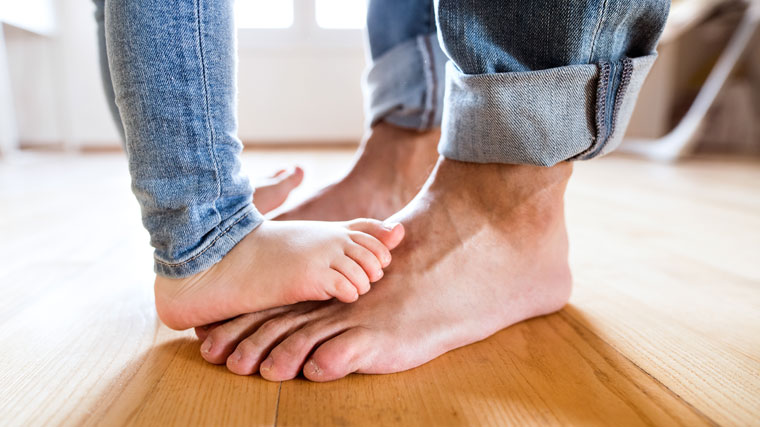Understanding Flat Feet, Its Causes and Treatment

Answer a few questions and we'll provide you with a list of primary care providers that best fit your needs.
Flat feet are no joke. In fact, they can be downright painful to your hips, ankles, and knees. Learn all about the condition, why it happens, and how it is treated.
What Causes Flat Feet?
Flat feet is the progressive flattening of the arch of your foot. It happens when a tendon in your lower leg, the posterior tibial tendon, stops functioning like it should. The result can be flat feet, or just one flat foot. It happens in stages:
- Pain and swelling of the tendon on the inside of your ankle.
- The joint just below the ankle which controls side-to-side motion of your foot begins to collapse.
- If not treated, this leads to complete arch collapse and possible arthritis throughout the joints in the back of the foot and ankle.
Most, but not all, people have a parent or a family history of the condition. Yet others with normal or even high arches may have an arch collapse as they age due to damage of the posterior tibial tendon.
How Is It Diagnosed And Treated?
After chatting with you about your symptoms, a physical exam by your doctor likely will follow. An exam of your feet will indicate how your joints align when supporting your body weight. X-rays show how your joints compress, and if there is cartilage loss or arthritis.
Your doctor likely will begin with a conservative approach to treatment. Rest, immobilization by wearing a boot, anti-inflammatory medication, ice, and custom-made or over-the-counter inserts for your shoes. Some also may benefit from physical therapy and/or custom braces which support the ankle and hindfoot.
Surgery, if needed, will depend on your individual situation because not all flat feet are the same.
Am I At Risk For Flat Feet?
Your chances of developing a flat foot are greater if have one or more of these risk factors:
- Obese
- Overuse of feet
- Diabetes
- Previous trauma to the ankle
- Inflammatory disorders like rheumatoid arthritis or psoriasis
- Participate in running or jumping sports
- Cerebral palsy or other neurologic disorders
- Tarsal coalition (abnormal connection between the bones in your foot)
The pain from flat feet can develop at any age, from teens to the elderly. Some people live their entire life with flat feet and never know they have it because they have no pain.
Answer a few questions and we'll provide you with a list of primary care providers that best fit your needs.




